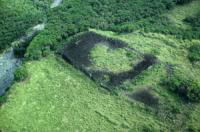Architecture and Construction

Radiocarbon testing challenges understanding of ancient Hawaiian architecture, social complexity
The development of monumental architecture and social complexity on the Hawaiian island of Maui occurred over a span of at least 500 years, according to the…

Laying the foundations for a green industry
Coal-burning power plants spend millions of dollars disposing of waste fly ash, a fine powder loaded with toxic chemicals. An estimated 200 million tonnes of…

SRS Researchers Test Chinese Tallow Tree For Use in Building Materials
Because Chinese tallow tree grows rapidly, has seeds rich in oils, abundant flowers, and colorful fall foliage, it has been widely planted both as an…

New environmental test facility helps manufacturers improve indoor air quality
As scientists learn more about the potentially harmful effects of indoor air pollution, nations around the world are imposing increasingly strict regulations on chemical emissions from furnishings, paints and building materials.
Using a new room-sized environmental test chamber, more than a dozen smaller chambers and a mass spectrometric center able to measure ultra-trace concentrations of airborne chemicals being emitted from products, scientists at the Georgia Tech Research In

MIT tool may reveal architectural past
A computer design tool originally created for animation may soon unlock the secrets of the structure of ancient cathedrals, according to MIT Assistant Professor John Ochsendorf of architecture.
A structural engineer specializing in architectural and construction history, Ochsendorf recently presented to colleagues a virtual design method that has been extended in novel ways by a team of architects, computer scientists and engineers at MIT.
“This is the kind of work – crossi

New Composite Material Developed for Light-Weight Building
Scientists at the Technische Universität Dresden/Germany have been developing an innovative composite material – “textile reinforced concrete“ – which is to serve for the structural reinforcement of buildings. For seven years now, more than 50 scientists from eight institutes have been collaborating in a research project entitled “Textile Reinforcements for Structural Strengthening and Repair“. The project has been funded by the German Research Foundation which has approved of the project’s t